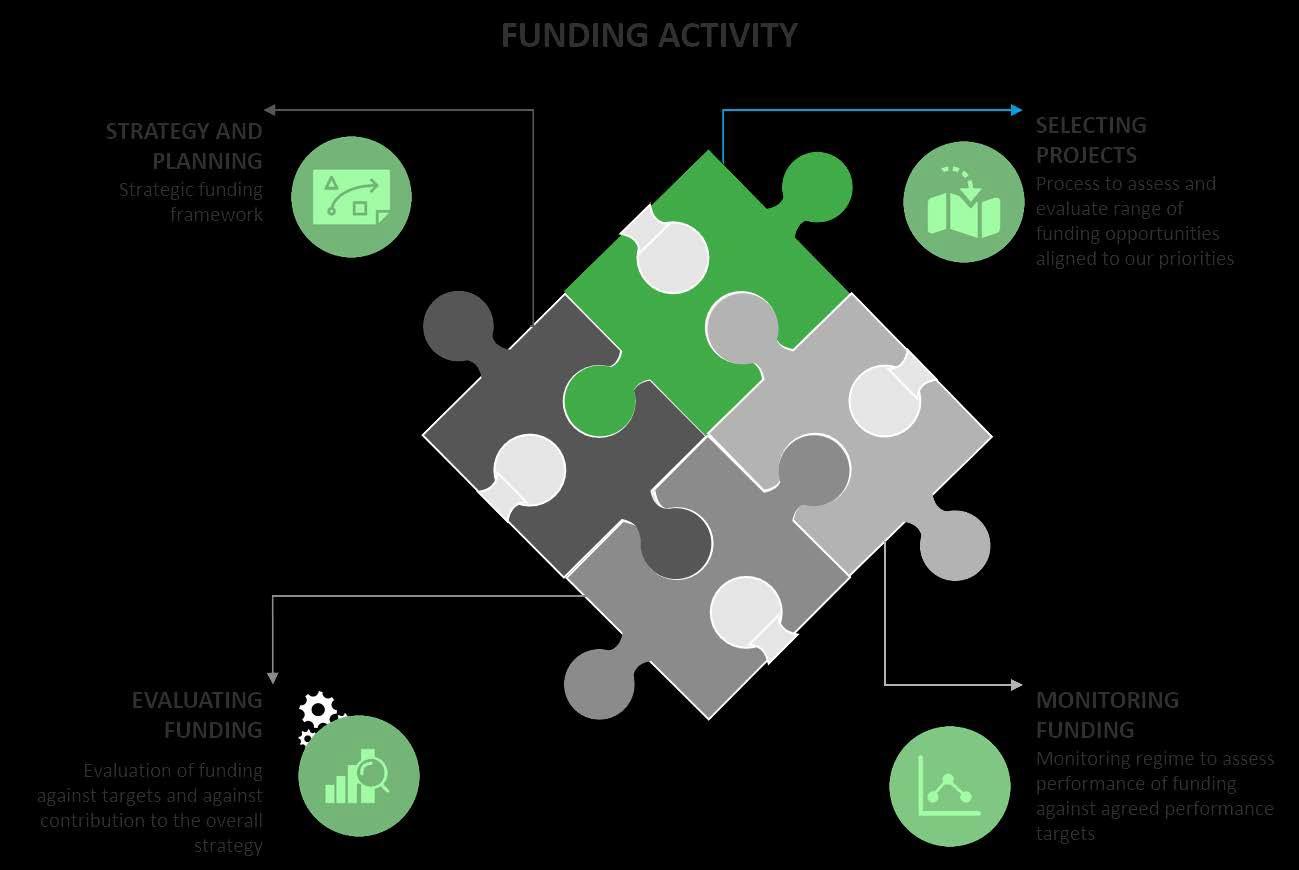
3 minute read
Our approach to Funding and Financial Management
Funding and Financial Management
Funding for Predator Free 2050 Limited has been provided as part of a non-departmental multi-year appropriation of $5.914M per annum.
Advertisement
It is anticipated that the Company will obtain a contribution of financial resources from other parties on a targeted 2:1 basis. Details of progress against these financial targets will be addressed in the annual business plan process.
Additional Government funding for the Company has been provided through the Provincial Growth Fund and the Jobs for Nature programmes. As funding from the Provincial Growth Fund will come to end on 1 Nov 2025, and Jobs for Nature funding will come to an end in June 2024, we are currently exploring additional funding sources to ensure the eradication gains and achievements can be maintained. We will investigate permissible and appropriate future funding sources, such as carbon credits and revenue from product developments, to sustain the programme as it expands to implement the national implementation strategy.
The table below outlines current and forecast funding:
Summary of appropriation 2022/23 2023/24 2024/25 2025/26
Vote Conservation: Non-Departmental Output Expenses $6.41m $5.91m $5.91m $5.91m
Provincial Growth Fund $4.00m $0.77m $1.30m -
Jobs for Nature $23.67m $24.57m - -
Note: Actual drawdowns vary from year to year reflecting the timing of actual investment for projects.
Allocation of government funding is guided by the Crown’s investment criteria for each project. These include:
For landscape projects:
i. the ability to eradicate or suppress predators at a landscape level to achieve specific and significant conservation objectives
ii. the ability to strengthen iwi–Crown relationships, and provide opportunities for iwi to exercise kaitiakitanga over their rohe
iii. contribution to social and economic outcomes
iv. demonstration of strong collaboration across all the relevant stakeholders
v. demonstration of strong governance and management of projects
vi. evidence of sound conservation, operational, financial and evaluation plans
vii. contribution of financial resources from other parties on a targeted 2:1 basis
viii. demonstration of durable arrangements to sustain the gains after the funding period
For breakthrough science:
i. the ability to develop breakthrough science research that aims to accelerate the eradication of target predators
ii. a robust, objective and peer-reviewed science Research Strategy
iii. balancing the potential benefit for achieving a step-change in our ability to achieve landscape scale eradication against the risk of research failure
iv. complementing technical research programmes with appropriate supporting social, ecological, data-sharing and strategy modelling research
v. providing a ‘bet-hedged’ mixed portfolio approach for the technical programmes, as far as resources allow, to maximise the chance of research aim achievement
Through the funding life cycle, we see four core stages, shown in Figure 1 below.
Figure 1. The four stages of our funding activity
Funders
The Company is a registered charitable company set up to help encourage and coordinate co-funding from third parties including regional government, iwi, landowners, philanthropic foundations, and businesses.
We also receive funding allocated through the Jobs for Nature fund and Provincial Growth Fund, as outlined earlier.
The Company is registered under the Charities Act 2005 and has charitable purposes that are wholly carried on
in New Zealand and is therefore exempt from income tax in New Zealand.
We are listed on Inland Revenue's website as having "donee" status, which broadly enables eligible donors to obtain tax credits or deductions from income tax for unconditional gifts made to it. Receipts issued for donations will comply with Inland Revenue's requirements.
We will continue to apply an enterprise approach to our funding activity, including contestable expression of interest processes. These mechanisms will allow us to identify regional/local councils, communities, mana whenua, businesses, NGOs and/or other entities who have begun or are contemplating predator eradication initiatives that can contribute toward meeting the Company’s goals. We will use our funding to stimulate collaboration between parties and to leverage activity that will make a material contribution to our goal.
Financial Reporting
Our financial statements are prepared in accordance with the requirements of the Crown Entities Act 2004. Those include the requirement to comply with New Zealand Generally Accepted Accounting Practice (NZ GAAP).
A robust Assurance Framework, to be implemented in Q2 2022/23, will strengthen and guide our stewardship of Crown funds.
Risk Management
An effective risk management framework supports us in achieving our strategic and business objectives by creating a robust control environment to support our decision-making. This allows us to maximise opportunities, reduce the likelihood of business loss or reputational damage, and manage exposure to risks.


